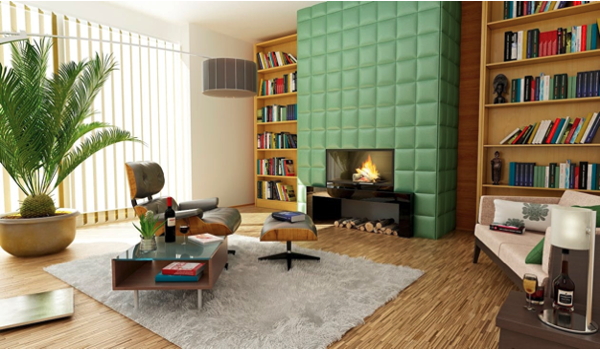2024-09-11 |
Transforming Spaces: Innovative Interior Design Trends for Modern Homes
Interior design in today's fast-changing environment transcends just aesthetics. Designing customised, sustainable, and useful spaces calls for both. Modern homes are havens of style, comfort, and technology. Modern homes created from the newest interior design ideas are transforming living areas. Sustainable materials and smart home technologies are reshaping our way of life and interaction with our surroundings.
The rise of smart home tech
One of the main interior design trends nowadays is smart home technology. These ecologically friendly changes increase efficiency and ease of use. For instance, electric window openers use a button or voice command to allow house owners to control natural ventilation. Electric window openers control indoor air quality and temperature by automating window opening and shutting, reducing cooling and heating demand. This development reveals how increasingly crucial smart systems are in pleasant and environmentally friendly homes.
 Image source Pexels.com
Image source Pexels.com
Eco-friendly and sustainable materials
As environmental consciousness develops, modern interior design must include sustainable design. Homeowners and designers are selecting environmentally friendly products to lower their impact. Popular ecological resources are recycled metal, bamboo, and reclaimed wood. These materials provide homes with a natural appeal and help avoid waste. Coatings and non-toxic paints help improve indoor air quality. Larger social trends towards ethical consumerism and lifestyle centre on sustainability.
Minimalist and functional spaces
Modern interior design's understated approach stresses simplicity, clean lines, and functionality in unassuming spaces. This design idea stresses both beautiful and useful spaces. By using every item of furniture and décor, minimalist houses help to create order and cut clutter. Smaller homes often have fold-out workstations and storage mattresses since space efficiency is important. The minimalistic approach inspires people to arrange their environments with quality above volume.
Biophilic design and nature integration
Biophilic design—combining nature into homes—is another common trend. According to this design philosophy, people living in connection with nature and natural elements might enhance their quality of life. Water features, natural light, and indoor plants comprise a biophilic design. Large windows, skylights, and indoor gardens mix indoor and outdoor areas to create a calm atmosphere. Natural components like wood and stone encourage this relationship with nature, so it is soothing and grounded.
Unique, personalised interiors
Growing in popularity as people value originality is personalised interior design. Homeowners are selecting spaces that mirror their tastes and way of life rather than standard styles. This style has driven demand for art, lighting, and custom furniture. Personalisation includes practical elements that satisfy tastes and needs, therefore transcending appearances. Whether a gourmet kitchen or a home office is maximised for output, customised interiors enhance form and function.
Vintage and retro styles return
Although modern design emphasises sleek and current elements, vintage and retro styles are also fashionable. This concept masterfully blends traditional and modern features to create nostalgic modern dwellings. Modern interiors combine mid-century modern designs, vintage furniture, and retro colour palettes for an eclectic look. Homes may embrace modern design while honouring the past with this mix. The ageless, dazzling interior tells a narrative.
Conclusion
Personal expression, sustainability, and technology influence interior design. Modern dwellings represent our values and goals. Smart home technology, sustainable materials, minimalism, biophilic design, customisation, and vintage styles will allow homeowners to build attractive, useful, and meaningful places. These unique interior design concepts will constantly influence our home decor.


